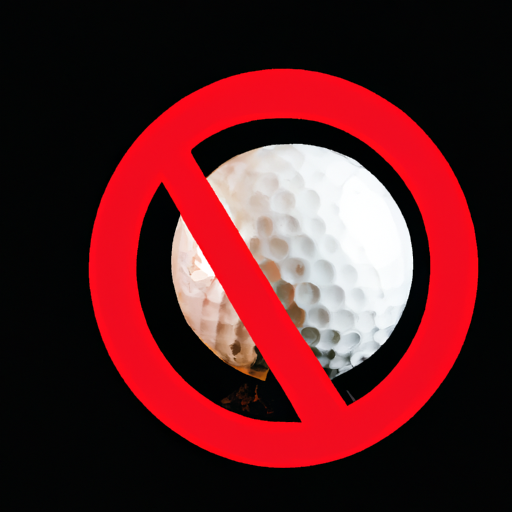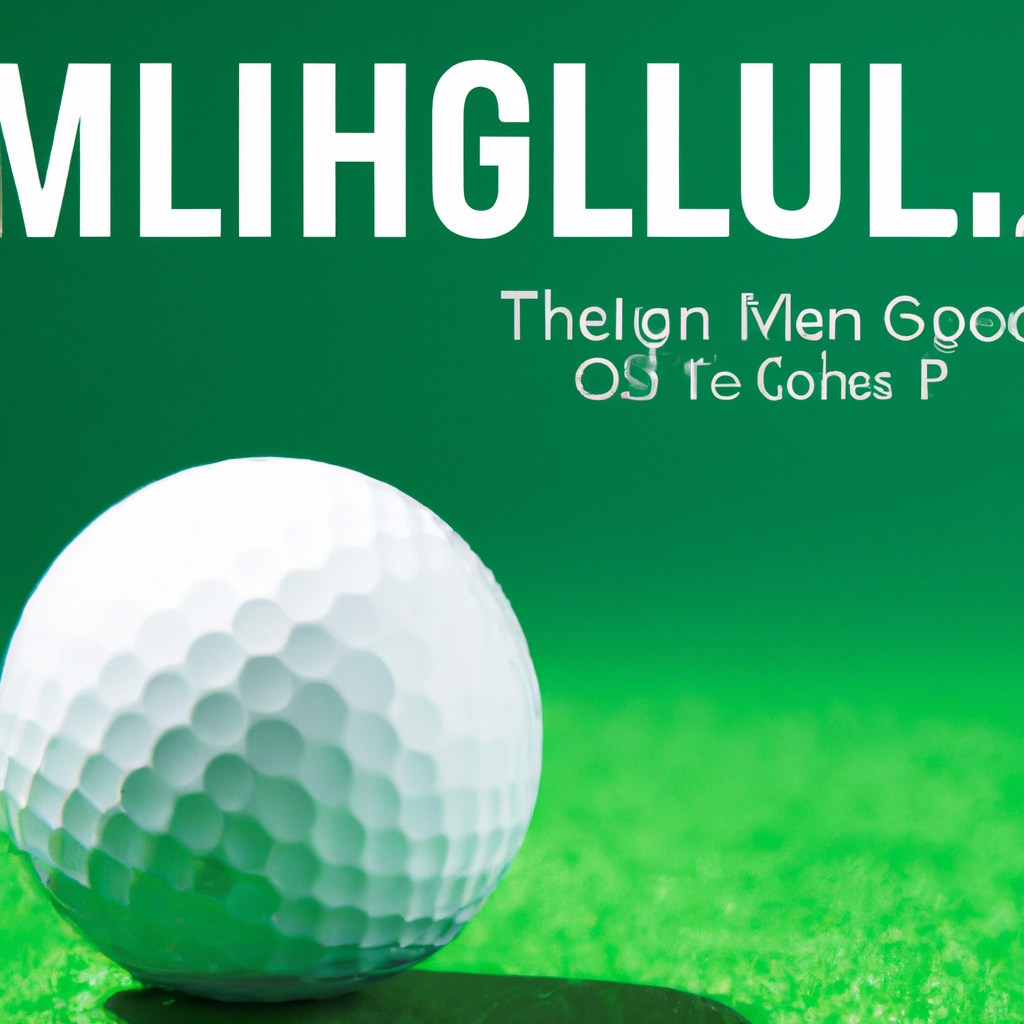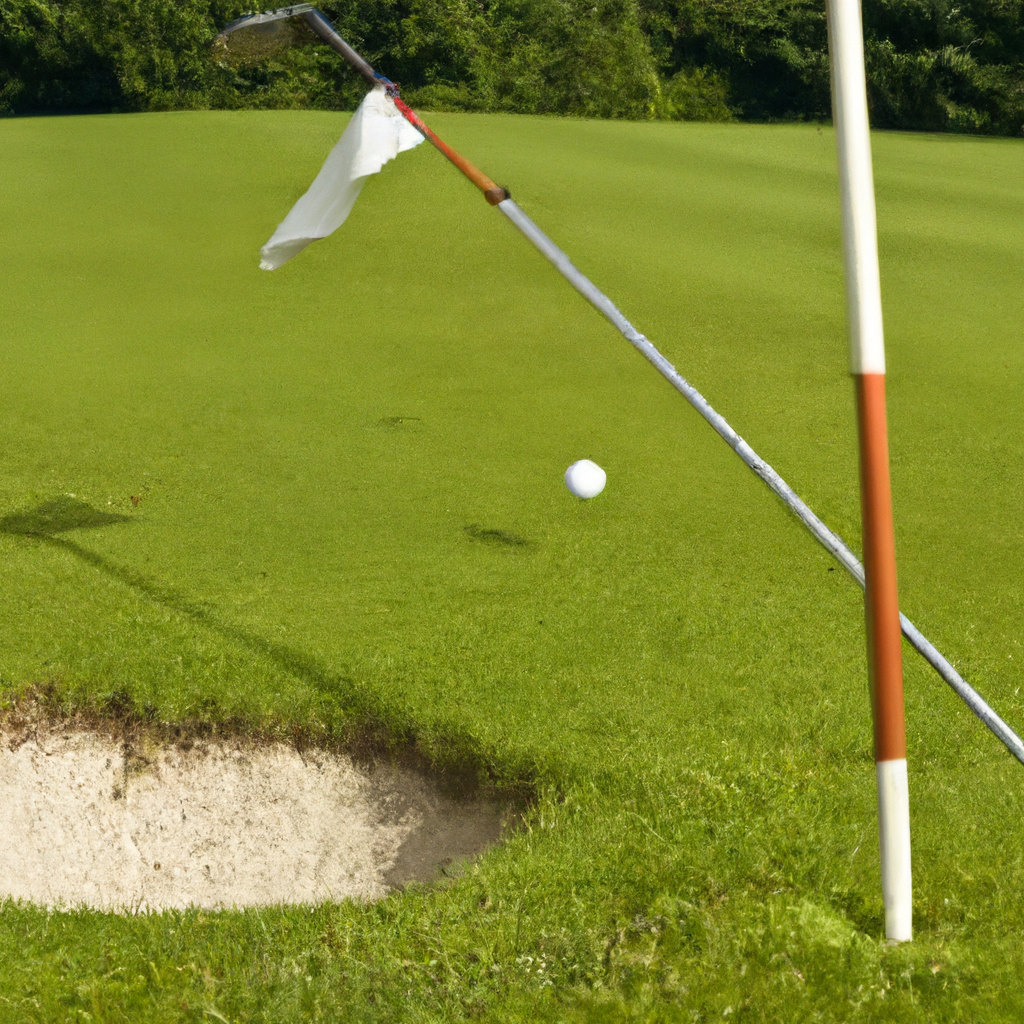You’ve probably heard the term “mulligan” being thrown around in golf circles, but do you truly understand what it means? To put it simply, a mulligan is a do-over in golf, a second chance to hit a fresh shot without penalizing yourself for a less-than-perfect first attempt. In this article, we’ll take a closer look at the concept of mulligans in golf, unravel their origins, and explore when and how they can be used on the course. So, grab your clubs and get ready to learn all about the fascinating world of mulligans in golf!
Understanding Mulligans in Golf
Golf is a game known for its precision and strategy, but even the best players occasionally find themselves in a less-than-desirable position off the tee. That’s where the mulligan comes in – a second chance to hit a better shot and give yourself a fighting chance on the course. In this article, we will delve into the definition, origins, rules and etiquette, as well as when and how to use a mulligan in golf. We will also explore alternative options, weigh the pros and cons, discuss famous mulligan moments, and touch on the ongoing debate surrounding this golfing tradition.

Definition of a Mulligan
A Second Chance off the Tee
A mulligan in golf refers to a do-over – a chance to replay a shot, usually the first shot off the tee. It allows players to eradicate the mistakes of their initial attempt and strive for a better outcome. It’s essentially a reset button that grants a second swing without any penalty. This unique aspect of the game has both recreational and competitive implications.
Official versus Unofficial Mulligans
There is a distinction between official mulligans and unofficial ones. In official competitions, such as professional tournaments or handicapped events, mulligans are not allowed. The rules of the game dictate that each player must play their ball as it lies, without the luxury of a second chance. On the other hand, casual matches among friends, friendly rounds, or even practice sessions often embrace the concept of mulligans. It is up to the players themselves to determine whether to include mulligans in their game or not.
Origins of the Mulligan
The Myth of a Group of Canadians
The origins of the term “mulligan” itself are shrouded in myth and mystery. One popular tale revolves around a group of Canadian golfers in the late 19th century. It is said that they were so fond of second chances that they created a rule allowing each player to take an extra shot off the tee, which they named after their buddy, David Mulligan. While there is little factual evidence to support this specific story, it has become deeply ingrained in golfing folklore.
Probably Derived from the 19th Hole Tradition
Another widely accepted theory suggests that the mulligan concept originated from the tradition of the 19th hole. After completing a round of golf, players would often gather at the clubhouse bar for a drink and discuss their game. Amidst the camaraderie and friendly banter, players would often recount their shots and jokingly ask for a “mulligan” – a term used to signify a second chance after the round had already come to an end. This tradition might have popularized the concept and eventually extended it onto the course itself.
Rules and Etiquette of Mulligans
No Mulligans in Official Competitions
In official competitions or tournaments, adhering to the rules and regulations of the game is essential. As such, mulligans are strictly prohibited. These events demand a high level of skill and consistency, leaving no room for second chances. Players must accept the consequences of their shots and work diligently within the boundaries set by the rules of golf.
Allowed in Casual Matches and Friendly Rounds
Conversely, in casual matches and friendly rounds, players have the freedom to incorporate mulligans as part of their gameplay. These more relaxed settings often prioritize enjoyment and camaraderie over stringent adherence to the rules. Mulligans can add an element of fun and excitement to the game, allowing players to let loose and improve their shots without fear of penalty strokes.
Agreement between Players is Required
Regardless of the setting, using mulligans requires the consent and agreement of all players involved. It is crucial for players to establish clear guidelines before the round begins to ensure a fair and enjoyable game. This agreement may include specifics such as how many mulligans each player is allowed, the timing of when they can be used, and any additional rules or restrictions that the players feel are necessary.
Mulligans Affect Only the Individual Score
One important aspect to note is that mulligans typically only impact the player who takes them. They do not affect the score or performance of other players in the group. Each player has the freedom to choose whether they want to use a mulligan, and the decision solely influences their own individual score. This allows players to customize their approach to the game based on their personal goals and objectives.
Using Mulligans to Keep Pace of Play
In some instances, players may opt to use mulligans to maintain a swift pace of play. Golf is a game that demands patience and precision, and it is not uncommon for players to struggle on certain holes. By taking a mulligan, players can avoid getting excessively behind schedule due to frustrating shots and keep the game flowing smoothly. This consideration for time is especially important in busy courses or situations where players are aiming to complete a round within a specific timeframe.
When and How to Use a Mulligan
Deciding When to Take a Mulligan
The decision of when to take a mulligan is entirely up to the individual player. Some golfers prefer to save their mulligans for critical moments or when they feel they truly need the extra chance to salvage a hole. Others may be more liberal with their use, taking mulligans whenever they feel dissatisfied with their initial shot. Ultimately, it is a personal choice that should align with each player’s specific approach and strategy.
Declaring and Executing a Mulligan
To ensure fairness and transparency, it is essential for players to declare their intention to take a mulligan before making the second shot. This allows all players in the group to be aware of the decision and prevents any misunderstandings or disputes later on. Once a mulligan has been declared, the player should re-tee their ball and take their second shot, as per the agreement established before the round began.
Using a Mulligan Strategically
Experienced players often employ mulligans strategically to enhance their overall performance. They may opt to use a mulligan on a difficult hole, where a great tee shot is crucial for a favorable outcome. Mulligans can also be a handy tool for building confidence, especially for players who have struggled on previous shots. By using a mulligan strategically, players can make the most of their opportunities and potentially improve their scores.
Common Situations for Mulligans
There are several common situations where players might choose to take a mulligan. One such scenario is when a shot goes out of bounds, resulting in a stroke and distance penalty. Instead of losing a stroke and re-teeing from the same spot, many players opt to take a mulligan to avoid the penalty and the added frustration. Mulligans can also be used when a player hits a poor shot that ends up in an unfavorable lie, such as deep rough or a hazard. By taking a mulligan, they get a fresh chance to position themselves for a better follow-up shot.
Alternatives to Mulligans
Playing a Provisional Ball
In situations where a player believes their shot might be lost or out of bounds, they have the option to play a provisional ball. This is an alternative to taking a mulligan and involves hitting a second ball from the original spot. If the first ball is found, the provisional ball is abandoned, and play continues with the original ball. However, if the first ball is lost, the player can continue the hole with the provisional ball without incurring a penalty.
Taking a Penalty Stroke
Instead of using a mulligan, players can choose to accept the outcome of their first shot and play their subsequent shot with a penalty stroke. This option is commonly used when a shot lands in a hazard, such as a water hazard or bunker. While it may seem less appealing than using a mulligan, it allows players to practice resilience and adaptability, which are essential skills in the game of golf.
Accepting the First Shot’s Outcome
Lastly, players can always choose to accept the result of their first shot and play on without any additional penalties or do-overs. This is the true spirit of golf, where players face the consequences of their shots and work with the circumstances they encounter. While it may be tempting to take a mulligan or explore alternative options, accepting the outcome of the first shot showcases integrity and sportsmanship.
Pros and Cons of Mulligans
Advantages of Mulligans
The primary advantage of mulligans is the opportunity they provide for improvement. By granting players a second chance, mulligans offer a chance to correct mistakes, boost confidence, and even enhance the overall enjoyment of the game. They can be invaluable for newer players who are still developing their skills, as well as for experienced players who want to challenge themselves and strive for better results. Mulligans also promote a more relaxed and inclusive atmosphere during casual games, ensuring everyone has a fair shot at success.
Disadvantages of Mulligans
While mulligans have their merits, they are not without their drawbacks. Some argue that mulligans can blur the line between fair play and bending the rules. The absence of penalty strokes may lead to a casual and less disciplined approach to the game. Additionally, relying too heavily on mulligans may hinder a player’s growth and development, as they do not face the full consequences of their shots. It is important for golfers to strike a balance between using mulligans to enhance enjoyment and maintaining the integrity of the game.
Famous Mulligan Moments
Notable Instances of Mulligans in Professional Golf
Despite their absence in official competitions, there have been instances where professional golfers have taken unofficial mulligans, albeit rare. One such example is the legendary golfer Jack Nicklaus, who famously took a mulligan during a Skins Game exhibition match. This surprising move by the golfing icon sparked a mix of amusement and controversy within the golfing community. Such memorable moments become part of golfing folklore and add an interesting twist to the game’s history.
Infamous Mulligan Stories
In addition to the professional realm, there are numerous amusing and often humorous mulligan stories that circulate among golfers. Tales of beginners unintentionally taking mulligans on every shot or players calling for multiple mulligans to no avail bring a lighthearted element to the game. These stories serve as a reminder that even the most skilled golfers can succumb to the allure of a second chance and illustrate the widespread acceptance of the mulligan tradition among golfers worldwide.
The Debate Around Mulligans
Arguments in Favor of Mulligans
Proponents of mulligans argue that they enhance the overall experience of the game, making it more accessible and enjoyable for all players, regardless of skill level. Mulligans encourage players to keep a positive mindset and help maintain interest in a sport that can sometimes be frustrating. They can also be seen as a tool to level the playing field, allowing less experienced players to compete on a more equal footing with their skilled counterparts.
Arguments Against Mulligans
Opponents of mulligans believe that they undermine the integrity of the game and devalue the significance of each shot. They argue that golf is a game of consistency and challenge, and taking a mulligan eliminates the repercussions of poor shots. This viewpoint emphasizes the importance of embracing the natural results of each swing and learning from mistakes. Critics also express concerns about the potential impact of mulligans on the pace of play, potentially prolonging rounds unnecessarily.
Conclusion
In conclusion, understanding mulligans in golf grants players the ability to explore an additional layer of the game. Whether used to improve shots, amplify enjoyment, or level the playing field, mulligans have become an integral part of casual golfing culture. However, their acceptance and implementation depend on the context and preferences of the players involved. While some embrace the idea of a second chance off the tee, others prioritize the traditional rules and etiquette of the game. With a nuanced understanding of the origins, rules, and alternatives to mulligans, players can make informed choices that align with their own golfing philosophies. So, the next time you step onto the tee box, consider whether a mulligan might enhance your golfing experience or if you prefer to embrace the true essence of the game – accepting the results of each shot and embracing both the successes and the challenges that come with it. Happy golfing!










